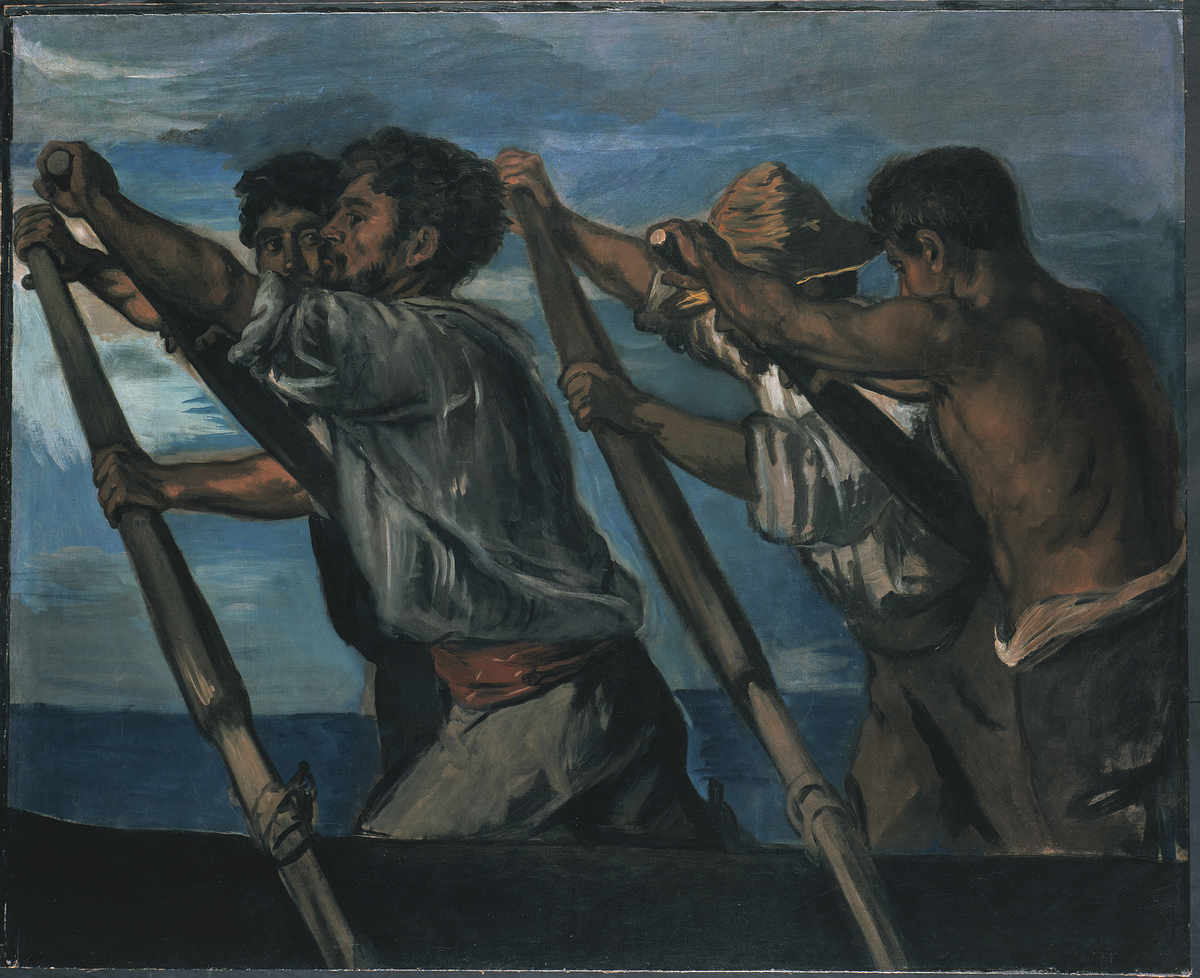Abstract
Hans von Marées (1837–1887), like Arnold Böcklin and all of their
fellow “German-Romans,” spent much of his career in Italy. He went back
to Germany in 1871–73 and experienced the feverish “founding period”
that immediately followed unification. But he then returned to Italy,
where he spent the rest of his life. There, he painted what has been
described as a “timeless earthy paradise,” which was “‘poor’ in form but
rich in color.” (Claude Keisch, in Francoise Forster-Hahn et al.,
Sprit of an Age: Nineteenth-Century
Paintings from the Nationalgalerie, Berlin. London: National
Gallery Company, 2001, p. 152). The work seen here is a preparatory oil
painting for Marées’s first and only commission: frescoes for a marine
observation station in Naples founded by the German zoologist Anton
Dohrn. The style of Oarsmen differs
from that of a Böcklin canvas, but it has a kinship with the work of Max
Liebermann and other plein-air
painters: the subject, for example, is treated in a straightforward
manner, without any classical allusions. Wind, light, and color demand
our attention as they animate the massive bodies in this enormous work
(the preliminary “sketches” were actually equal in size to the completed
frescos).
